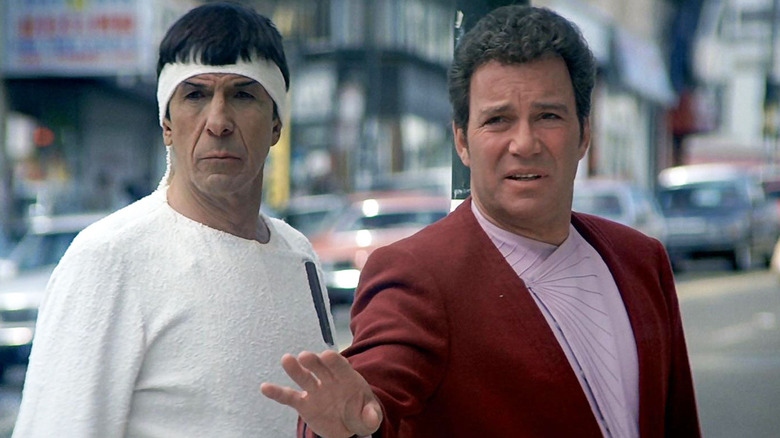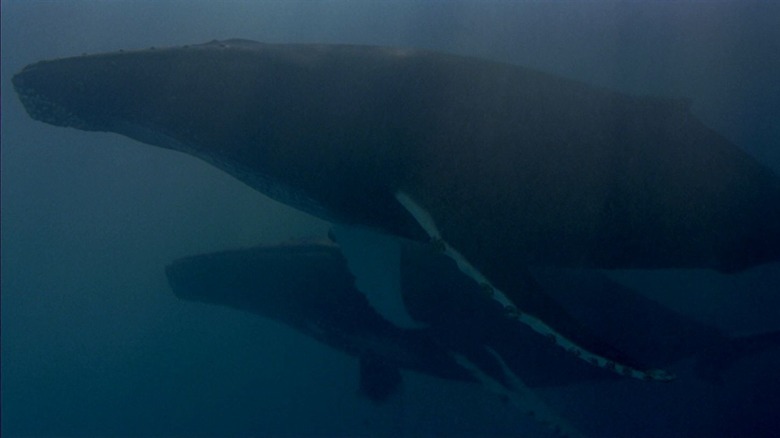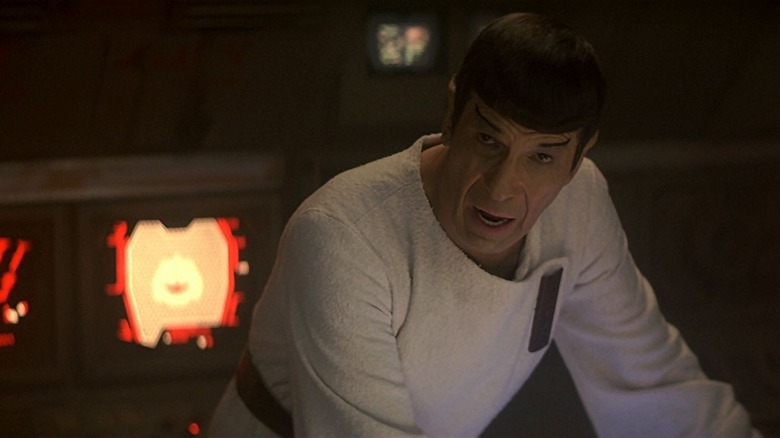Star Trek IV Was Originally About Saving Something Much Smaller Than Whales
After the release of "Star Trek VI: The Undiscovered Country" in 1991, a consensus began to form among Trekkies as to which Trek movie was the best. Most fans agreed that the even-numbered films — "Star Trek II: The Wrath of Khan," "Star Trek IV: The Voyage Home," and "Country" — were the good ones, while the odd-numbered film — "Star Trek: The Motion Picture," "Star Trek III: The Search for Spock," and "Star Trek V: The Final Frontier" — were the bad ones. This is arguably an unfair assessment, although "Final Frontier" is still often considered the worst in the series, and "Voyage Home" remains one of the most popular.
Indeed, "Voyage Home," even when not adjusted for inflation, remains the most financially successful "Star Trek" movie released before 2009. This might seem unusual to a 21st-century eye, as "Voyage Home" was a fish-out-of-water time travel comedy and not a revenge-motivated action flick.
In the film, Admiral Kirk (William Shatner), the recently resurrected Spock (Leonard Nimoy, who also directed), and the rest of the crew of the now-destroyed U.S.S. Enterprise return to Earth to face the consequences of their actions committed in "Star Trek III." They find the Earth's oceans are being drained by an unknown alien probe looking for humpback whales, a species hunted to extinction a century ago. Using a broken-down Klingon ship, Kirk and co. travel back in time to retrieve whales from the year 1986.
In the book "The Fifty-Year Mission: The Complete, Uncensored, Unauthorized Oral History of Star Trek: The First 25 Years," edited by Mark A. Altman and Edward Gross, the makers of "Star Trek IV" revealed that they initially thought of a different endangered species to rescue, namely: the snail darter, a recently discovered fish that was about three inches long.
There be whales here
Nimoy noted that he and producer Harve Bennett initially thought up a time-travel story for "Star Trek IV" and that "we should lighten up. The picture should be fun in comparison to the previous three." Nimoy also wanted the film to be centered on ecology and visited several universities to talk to environmental scientists and futurists to get their immediate concerns about the future. Ultimately, Nimoy said, those conversations spun off into philosophy and theory, leading to some deep consideration about how human contact with extraterrestrials might potentially change notions of religion and sociology. Fun conversations, to be sure, but not quite what Nimoy needed to form a story for a "Star Trek" script.
It wasn't until he met with a particular author that notions of biodiversity — as a direct story element — began to enter Nimoy's mind in earnest. The director said:
"In [Edward O. Wilson's] book Biophilia, he tells us we could be losing as many as ten thousand species off this planet per year—many of them having gone unrecorded. We won't even have known what they were and they will be gone. He touches on the concept of a keystone species. If you set up a house of cards you may be able to pull away one card successfully and another card successfully. But at some point you are going to get a card that is a keystone card. When that one is pulled away, the whole thing will collapse."
Wilson's book is easy enough to find online.
The "keystone," Nimoy pointed out, could be any species on Earth, and that it was wise to protect them. Throughout the 1980s, the slogan "Save the Whales" was largely touted on bumper stickers and by environmental activists.
Lo, there was Nimoy's "hook."
The snail darter
Nimoy liked the idea of saving the whales, but there was a bit of a creative difference. Harve Bennett had the idea, according to StarTrek.com, to make the small snail darter the object of the time traveler's hunt. Bennett felt that it would be more poetic if the fate of the Earth rested in the hands (fins?) of an overlooked, seemingly insignificant species. In "The Fifty-Year Mission," executive producer Ralph Winter recalls hearing Nimoy talking about the snail darter, and how it was kind of a terrible idea. Winter said:
"It was Leonard's idea about saving the whales as opposed to, as he famously said, 'trying to save the snail darter.' Saving whales made it a bigger movie."
Indeed, saving whales made for a more dramatic story, as gathering them up and transporting them onto a starship required far more elaborate logistics. A small fry could merely be carried in a glass bowl.
Importantly, though, Leonard Nimoy wanted a lighter tone than the previous movies. He found an efficient ecology story, but he wanted to eschew the headiness of the first film, the action of the second, and the tragedy of the third. Nimoy said:
"I just felt it was time to lighten up and have some fun. That meant that if we were going to do time travel, the best thing we could do was come back to contemporary Earth, where we could have some fun with our people. They would more or less be a fish out of water on the streets."
Nimoy's instincts were correct. Audiences loved "The Voyage Home."


